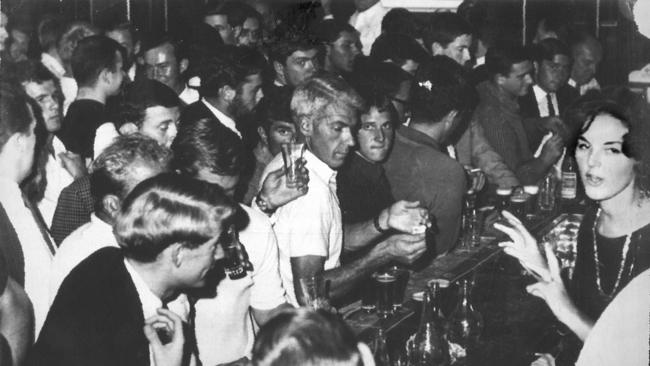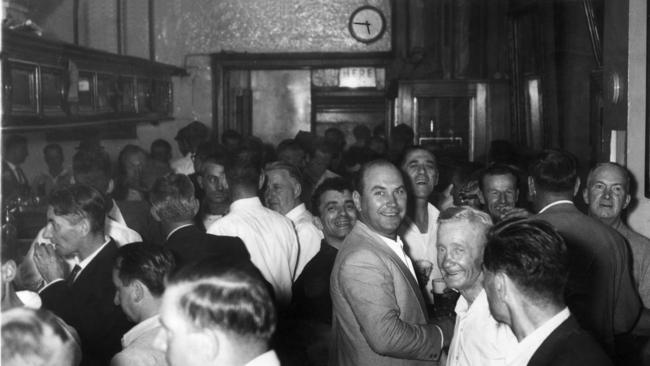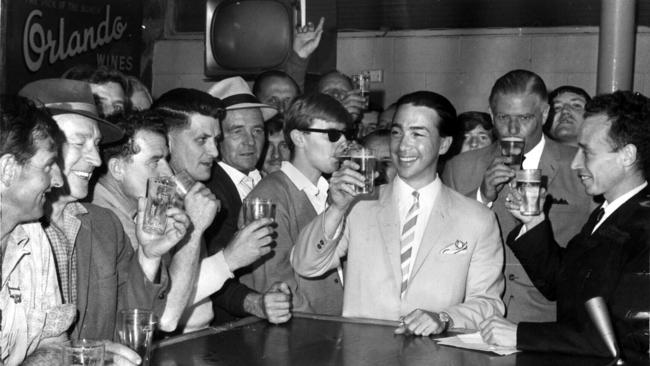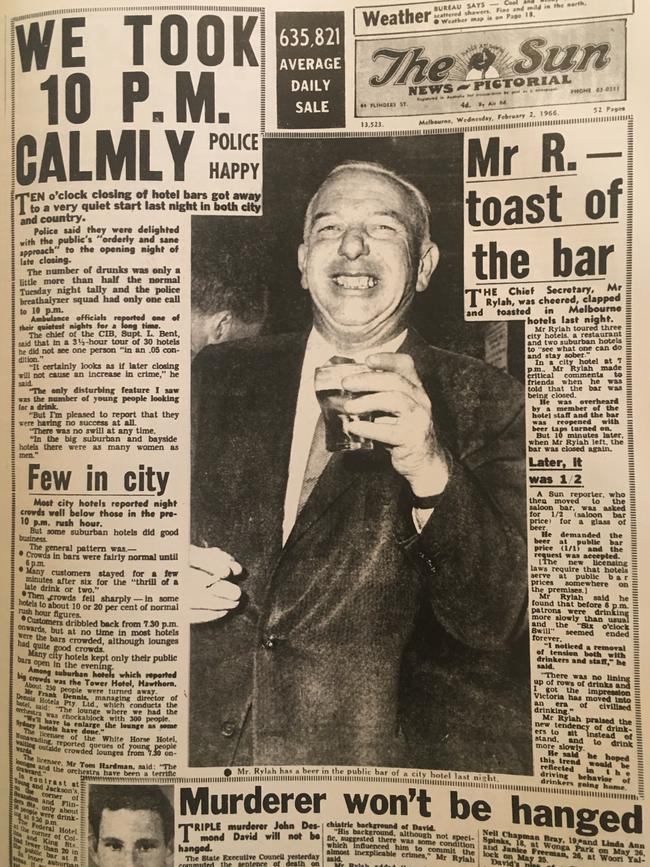How 6pm closing times shaped a generation’s drinking habits
IT was meant to be a temporary measure during World War I. But the 6pm closing time at Aussie pubs lasted years — as did the infamous six o’clock swill.
VIC News
Don't miss out on the headlines from VIC News. Followed categories will be added to My News.
AT THE height of World War I, Australian pubs underwent a fundamental change that would have shocked the Diggers who eventually made it back from the war.
Backed by Australia’s temperance movement, Australian states and New Zealand legislated to cut the opening hours of hotels, and the tradition of the six o’clock swill was born.
Victoria, South Australia, New South Wales and Tasmania all introduced six o’clock closing in 1916 as a temporary measure to maintain public morality and austerity during the war.
MELBOURNE PUBS USED TO CLOSE AT 6PM

Temperance supporters also argued that it was unfair that hotels were allowed to sell alcohol outside normal trading hours for other retail businesses.
Another factor in reduced hotel hours was a riot involving new AIF troops housed at camps in Casula and Liverpool in NSW.
Up to 3000 recruits drank Liverpool dry, looted shops and headed into Sydney by train. The resulting riot led to the shooting death of one soldier as authorities tried to quell the unrest.
Temperance supporters in Victoria had been pressing for reduced hotel hours or total prohibition for years before the war, and complained to then-Victorian premier Alexander Peacock after war was declared of incidences of public drunkenness involving newly-enlisted soldiers in central Melbourne in 1916.
The temperance movement was buoyed by the decision of King George V in April 1915 to banish liquor from the royal household, following Chancellor of the Exchequer Lloyd George’s declaration that Britain’s three greatest threats were “Germany, Austria and drink”.

Queensland and Western Australia resisted the six o’clock push. In WA, hotels were forced to close at 9pm from 1917, but Queensland waited until 1923 to impose an 8pm closure.
But in Victoria, New South Wales, South Australia and New Zealand, publicans were required by law to call “Time, gentlemen” at 6pm.
Referendums on the issue in South Australia and New South Wales were in favour of restricting pubs to 6pm closing.
While 6pm closing was intended to keep our menfolk uncorrupted by the demon drink at night, the measure, in fact, had the opposite effect and brought with it the six o’clock swill, a phenomenon first observed by The Argus in November 1916.
It reported that men prone to drunkenness were simply speeding up their alcohol intake to get their fill between knock off at 5pm and the 6pm close.
Grog shops were springing up around Melbourne after hours, the newspaper said, and billiard rooms and “temperance” bars, which were allowed to open beyond 6pm, were suspected as sources of illicit night-time booze.
Pub patrons could also buy bottled alcohol to take home.
Victoria’s 6pm closure legislation was initially temporary, to last until the end of the Parliament following the end of the war. But in November 1919, the government of premier Harry Lawson made the measure permanent.
The six o’clock swill was ugly.
In her 1953 fictionalised autobiography Caddie: A Sydney Barmaid, Catherine Edmonds, described vividly the mad crush of the six o’clock swill when she worked behind the counter in a Sydney pub during the Great Depression.
She recalled: “It was a revolting sight and one it took me a long time to take for granted. The smell of liquor, the smell of human bodies, the warm smell of wine and, on one early occasion even a worse smell as a man, rather than give up his place at the counter, urinated against the bar.

“The shouting for service, the crash of falling glasses, the grunting and shoving crowd, and that loud, indistinguishable clamour of conversation found nowhere but a crowded bar, beat upon my brain until all my actions became mechanical.”
By the 1940s, American troops arriving in Melbourne and other cities en masse were baffled by our restrictive liquor laws and at times resentful that they couldn’t get a drink after 6pm.
In more prosperous times after the war, public attitudes to alcohol became more liberal.
Liquor licensing laws governing the consumption of alcohol in Victorian restaurants were eased in 1953 as migrants established European-style cafes, but a referendum in March 1956 aimed at extending hotel hours to 10pm ahead of the Melbourne Olympics failed.
American journalist Red Smith, in Melbourne to report the games for the New York Herald-Tribune, described the six o’clock swill at Young and Jackson’s for his readers at home.
Smith noted that patrons in that final, mad hour of trade would keep their empty glasses until time was called, then would present them to be refilled and guzzled as quickly as possible.

“The bartender didn’t carry your glass to the tap. He carried a pistol-shaped spigot hitched to a long tube and squirted your glass full where you stood,” he said.
“Take a battle-scarred researcher’s word for it, there are no gamer competitors or pluckier stayers than the legions who rush the growlers (beer taps) six evenings a week in Melbourne’s bars.
“The six o’clock swill, a charming folk custom, was sired by a law that requires saloons to stop serving at six o’clock. This creates a challenge which no Aussie worth his malt will take lying down, as long as he can stand.”
It took another 10 years, and the Phillips Royal Commission into the state’s liquor licensing regime, before hotel opening hours were addressed.
The royal commission triggered a wide range of reforms, but the first was the introduction of 10pm closing came on February 1, 1966. The Bolte government’s chief secretary, Arthur Rylah, a long supporter of freeing up liquor laws, toured three city pubs that evening.
He told The Sun he noticed that patrons were drinking more slowly, and sitting as they drank, indicating to him that the age of the six o’clock swill was dead.
“I noticed a removal of tension both with drinkers and staff,” he said.
“There was no lining up rows of drinks and I got the impression that Victoria has moved into an era of civilised drinking.”
Victoria was late to the party. Tasmania abandoned 6pm closing in 1937. New South Wales followed in 1955. Queensland ditched its 8pm closing in 1966. South Australia went to 10pm in September 1967, and NZ followed suit in October 1967.


